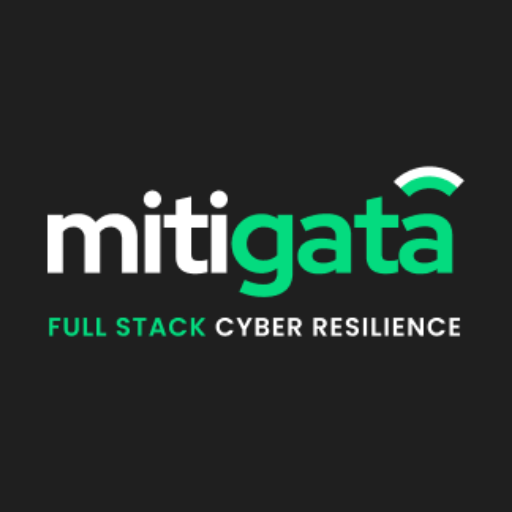Recent surveys from 2024 show a harsh reality: 43% to 46% of SMBs faced at least one cyberattack in the past year, 43% of all data breaches now target small businesses, and SMBs experience 350% more social engineering attacks than large enterprises.
What’s more scary? Most of these businesses thought that they were protected until they weren’t.
If your security stack still depends on basic antivirus, firewalls, and email filters, you’re leaving massive gaps open for attackers. Every missed alert or delayed response could mean downtime, lost revenue, and even break customer trust.
In this blog, we’ll look at how XDR (Extended Detection and Response) helps small businesses strengthen security, improve efficiency, and save costs before it’s too late.
Why SMBs Choose Mitigata for XDR Solutions

If you run a small or mid-sized business, you already know the struggle – tight budgets, limited IT staff, too many security tools and constant pressure to keep operations running.
As India’s leading cyber resilience company, trusted by 800+ businesses across 25+ industries, Mitigata helps you strengthen your security without adding complexity.
Through our XDR solution, we give you enterprise-level protection without the enterprise-level cost or complexity.
Stop Overpaying for XDR. Get Our Solution at ₹1,000/Device
From platform selection to fast and easy integration by our team that won’t ghost you.

With Mitigata, you get:
- Unified Defence: One platform that covers endpoints, email, network, and cloud, eliminating the need for multiple vendors.
- 24/7 Monitoring: Our in-house SOC and response teams keep watch around the clock.
- Smarter Response: Real-time analytics enable automated threat identification and faster incident response.
- Affordable Security: Up to 30% less expensive than traditional configurations.
- Seamless Integration: Connects easily with your existing systems.
- Personalised Setup: We tailor the solution to your specific business needs.
What is XDR?
Unlike traditional security tools, Extended Detection and Response (XDR) provides an integrated security platform that monitors your entire IT environment – endpoints, networks, cloud workloads, email, and applications. It collects and connects from every part of your system and automatically spots threats, investigates them, and takes action. This gives security teams a clearer view and helps them act faster and more effectively.
Real-world Example:
A manufacturing company with 75 employees experienced a cyberattack where hackers gained access to its systems using stolen passwords. Their XDR platform detected the anomaly when:
- Login attempts came from an IP address in a different country
- The user accessed 10x more files than their typical baseline
- Data exfiltration to an external cloud storage service began
Want to see how XDR protects businesses end-to-end? This guide explains it all.
How XDR Can Benefit Small Businesses (SMBs)
For many small and mid-sized businesses, cybersecurity feels like an uphill battle. Limited budgets, lean IT teams, and an expanding attack surface make it hard to stay ahead of threats. The following benefits show how XDR tools change the game.
Unified Security Operations Without the Overhead
XDR reduces the need for several security vendors, resulting in lower costs and complexity. Instead of managing multiple dashboards for endpoint protection, SIEM, network detection, and email security, you can get complete coverage from a single platform.
Get XDR Launch in Days, Not in Weeks or Months

Visibility Across Your Entire Attack Surface
| Security Area | Without XDR | With XDR |
|---|---|---|
| Endpoint Devices | Individual antivirus alerts, no context | Real-time monitoring with behavioural analysis across all devices |
| Email Security | Spam filter only, no post-delivery tracking | Tracks email threats through the entire kill chain—from inbox to execution |
| Network Traffic | Firewall logs require manual review | Automated analysis of traffic patterns with threat correlation |
| Cloud Applications | Limited visibility into SaaS activities | Monitors user behaviour, data access, and suspicious activities across cloud apps |
| Threat Investigation | 4-6 hours average per incident | 15-20 minutes with automated timeline reconstruction |
| Response Coordination | Manual actions across multiple tools | Orchestrated response across the entire environment from a single console |
Expert-Level Protection with Minimal Expertise Required
XDR platforms incorporate threat intelligence from millions of endpoints globally, giving your small business access to the same attack data that Fortune 500 companies use. The platform learns from every attack it sees worldwide and automatically applies those learnings to protect your environment.
Find out which EDR solutions are trusted by Indian companies for maximum protection.
Why SMBs Need XDR Now More Than Ever
As per Verizon’s 2024 Data Breach Report, 46% of all breaches target organisations with fewer than 1,000 employees. New working environments and cloud adoption are some of the factors that have increased the attack surface of the SMB.
Every new endpoint, SaaS program, and network connection becomes an access point for attackers.
Today, your traditional antivirus and firewalls cannot keep up with the increasing complexity of threats.
You need XDR to put all of these components together. It will give you a unified visibility and faster detection across all layers of the IT infrastructure.
As per reports, a successful ransomware attack can cost a small business an average of $108,000. This includes the cost of downtime, recovery, legal battles, and reputational damage.
For many small and medium-sized businesses, this is a matter of survival.
800+ B2B Companies Trust Mitigata XDR For Real Security

How XDR is Different from Traditional Security Tools?
Architecture: Integrated vs. Fragmented
Traditional Security Stack: Many small and medium-sized enterprises depend on a variety of security solutions. Antivirus, firewalls, email gateways, and log managers each function independently.
Each tool produces its own notifications and has its own console. To understand the problem, IT professionals must manually merge data from several platforms.
This fragmented structure frequently results in slower response times, missed links between events, and an increased risk of human errors.
XDR Platform: An XDR (Extended Detection and Response) platform has an integrated architecture. It collects data from endpoints, networks, servers, and cloud systems and uses machine learning and analytics to understand each alert.
This reduces the team’s manual effort and improves detection accuracy.
Discover the 10 XDR solutions in India that are trusted by thousands of big companies.
- Detection Capabilities: Broader Visibility and Context
| Security Area | Without XDR | With XDR |
|---|---|---|
| Endpoint Devices | Individual antivirus alerts with little context | Continuous behavioural monitoring across all endpoints for early threat detection |
| Email Security | Basic spam filters and no post-delivery tracking | Tracks email threats from the inbox to execution using behavioural analysis |
| Network Traffic | Manual log review required | Automated traffic monitoring with correlation of suspicious patterns |
| Cloud Applications | Limited visibility into SaaS activity | Tracks user behaviour, data access, and anomalies across cloud apps |
| Threat Investigation | 4 to 6 hours per incident | 15 to 20 minutes with automated timeline reconstruction |
| Response Coordination | Manual responses using multiple tools | Automated and coordinated response across all systems from a single console |
3. Operational Efficiency and Response
Traditional tools cause alert overload. Security teams can spend up to 80% of their time analysing false positives.
Because each system functions independently, analysts must log into several consoles, compile separate reports, and manually reconstruct attack timelines.
This slow and inefficient process increases the likelihood of missing key incidents.
An XDR platform improves operational efficiency by integrating important alerts into a single, highly accurate incident report. Analysts receive a single comprehensive report with full context and actionable insights, rather than dozens of individual alerts.
This reduces alert fatigue, accelerates investigations, and enables teams to stay focused on actual threats.
Don't Settle for Ordinary. Get the Excellent XDR

4. Total Cost of Ownership (TCO)
When comparing security solutions, it is important to consider total cost, including licenses, integrations, and ongoing management.
| Category | Traditional Stack (50–100 Employees) | XDR Platform (50–100 Employees) |
|---|---|---|
| Endpoint Protection | $5,000–$8,000 | Included |
| Email Security Gateway | $3,000–$6,000 | Included |
| SIEM or Log Management | $10,000–$15,000 | Included |
| Network Detection | $8,000–$12,000 | Included |
| Threat Intelligence Feeds | $5,000–$10,000 | Included |
| Integration and Management Labour | $15,000–$25,000 | $5,000–$8,000 |
| Total Annual Cost | $46,000–$76,000 | $30,000–$48,000 |
XDR solutions reduce overall cost by consolidating multiple security tools into a single platform. They lower integration and maintenance overhead while providing enterprise-grade protection that fits small business budgets.
Conclusion
As cyber attacks get more advanced, small and medium-sized businesses cannot rely on disconnected security systems. The Extended Detection and Response tool provides SMBs with the unified visibility, automation, and speed they need to detect and respond to malicious activities before they cause damage.
Mitigata’s XDR solution provides you with enterprise-level security that is simple, scalable, and cost-effective.
Book your free demo with Mitigata today!

